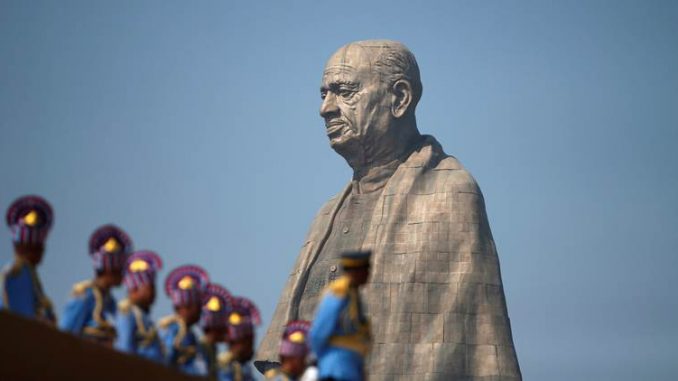
Patel viewed rights as a safeguard against oppression and provided the masses the power to question the government; he contributed towards grass-roots democracy
By Himanshu Arora
John Locke and Jean-Jacques Rousseau are two of the most celebrated figures of western liberal philosophy and democracy. Locke’s writing inspired the rebellion in the US, leading to its independence in 1776, while Rousseau’s ideas shaped the French Revolution. It is these ideas of justice, rights and liberty that tore apart European monarchies and gave way to democracy and people’s rule in Europe.
The two are often called the architects of modern Europe and its nation states. Similarly, Sardar Vallabhbhai Patel, who lived through various revolutions during pre-Independent India, was the architect of modern India and is perhaps the most important figure in Indian history. His achievements are equivalent to that of Locke and Rousseau as for the ideas of liberty, equality and justice to be implemented, we needed a geographically-united India. Without a united India, these ideas would have never seen the light of day.
Imagine if our subcontinent was divided into two regions, one part a democratic India surrounded by the other part—close to 560 smaller states ruled by kings and their descendants. Half of the Indians would be living under a democratic set-up with freedoms and the rest living under some monarchy. The principle of Unity, Liberty, Equality enshrined in the Constitution would exist in one part and not in the other.
There would be restrictions on travelling and transporting goods from one part to another. In corollary, one part of India would be governed by the ideas of Justice and Liberty, whereas the other would have survived devoid of these ideas. Chaos and anarchy would have followed, and the idea of India would have failed at the very start of its journey. Such a scenario would have proved the Western critics correct when they claimed that India cannot be united. However, these critics were wrong, and the Idea of India has survived to this day. The strong man of India who made this possible was Sardar Patel—‘the Bismarck and architect of modern India’. The idea of integrating India to implement these ideals was made possible by this legendary man.
Watch video
The ingenuity of Sardar Patel lies in the fact he did not carry any ideological burden. He was completely vested in the idea of India, and all his efforts were initially focused on the attainment of its independence. Once that had been achieved, he relentlessly followed the idea of uniting and integrating the nation at a time when it was suffering from partition, communalisation and the refugee crisis. He was determined to commit himself towards building one India by uniting 562 princely states (constituting 48% of area).
He was a political pragmatic, a diplomat and a military commander at the same time, in the era when the leadership was divided in ideological battles. He used the policy of carrot-and-stick to merge princely states with India and stopped the Balkanisation of the country. No one besides him has finished the task of integrating the princely states of Hyderabad, Junagarh and Kashmir into the Union of India. Patel was a believer of a strong Indian state. He was also the architect of Indian Civil Services and called it the steel frame of India. He realised that India needs an efficient and competent administration to translate new India’s political intent into realities.
Post-Independence, Patel’s ideas circumscribed debates over democracy, federalism and social justice. The principle that people should be governed on the basis of consent was echoed in his call for plebiscite in princely states. His firm beliefs in the principle of equality—that all men and women are created equal—can be seen as very progressive for his times. He believed that all citizens have inalienable rights irrespective of caste, creed and religion. His ostensible belief reflected in the debates of the Constituent Assembly, where he opposed the motion of separate electorates on the basis of religion. These ideas of Patel influence people in governing themselves to this very day.

Critics may argue that Patel’s idea of unity was incomplete. He may have created a united India, but this India remains full of contradictions and inequalities, both social and economic. Politically, we may be equal and united, but socially and economically we are not. However, the critics often forget that Patel’s ideas were not symbolic of the Western ideals of unity and democracy. In his view, rights served as a safeguard against oppression and provided the masses power to question the government. Therefore, he contributed towards grass-roots democracy to enlighten the masses. He was a champion of this cause as reflected by his role in Kheda and Bardoli satyagrahas, during which he was given the title of ‘Sardar’ from our beloved father of nation, Mahatma Gandhi.
Source: Financial Express

Leave a Reply